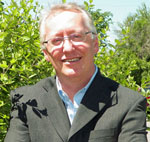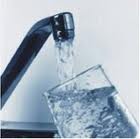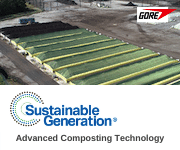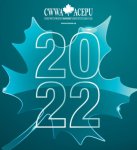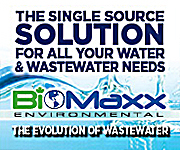 |
||||||||||||||||||||||||||||
| Subscribe | Past Issues | www.cwwa.ca | Water Source Magazine | ||||||||||||||||||||||||||||
|
CWWA News
As I started to write this column, I paused to watch Pope Francis and his address at Maskwacis, Alberta. This public apology was an important and critical step in the long process of reconciliation. Beyond apology, he looked to full investigation, healing, and recovery. Blessing of the waters was on his schedule. I have said many times that First Nations issues may not lie within the formal mandate of CWWA, but supporting reconciliation and recovery is in the mandate of every Canadian.
There has been growing interest and concern in the drinking water industry in North America over a group of compounds called Per- and Polyfluoroalkylated Substances or PFAS. This fact sheet was prepared by the CWWA Drinking Water Quality Committee and is intended to provide general high level information to CWWA members, while also referencing more detailed sources of information that will help members and their associated utilities prepare their own responses to questions about PFAS compounds they may encounter from their customers, municipal leaders, political leaders, media, and other concerned stakeholders.
Federal Initiatives
The Guidelines for Canadian Recreational Water Quality are comprised of multiple guideline technical parameters used to monitor water quality hazards and recommend science-based monitoring and risk management strategies. Recreational waters are considered to be any natural fresh, marine, or estuarine bodies of water that are used for recreational purposes; this includes lakes, rivers, and human-made constructions (e.g. quarries, artificial lakes) that are filled with untreated natural waters. While these Guidelines are not directly applicable to our members, many wastewater utilities discharge in recreational water bodies, and it’s important to work together with managers to ensure safety. On June 28, 2022, the government announced funding of $46.7 million for two climate resilience initiatives:
CWWA wrote to Environment and Climate Change Canada in response to the Discussion Paper – Preparing for Climate Change – Canada’s National Adaptation Strategy. The Association’s primary feedback is that:
These points are expanded on in the letter.
For the first time we're offering digital access to our CWWA Annual Report and Membership Directory for CWWA members. Use the same login you use to access member pricing on CWWA events. Eventually we hope to use this section of the website to build even more exclusive members only content.
COPENHAGEN, DENMARK. SEPTEMBER 11-16, 2022 This is your opportunity to showcase to the world as several thousand water professionals gather in Copenhagen this fall. This is the International Water Association’s largest event and only occurs every two years. Be part of the North American reception on the tradeshow floor. In addition to an excellent technical program, the exhibition floor will welcome over 10,000 visitors from around the world. Member News
AWWA, together with nine other associations, urged EPA and the Office of Management and Budget (OMB) to ensure that the agency prepares a robust economic analysis and consults with local government as it prepares its Comprehensive Environmental Response, Compensation, and Liability Act (CERCLA) hazardous substance designation proposal for certain per- and polyfluoroalkyl substances. The proposal to list perfluorooctanoic acid (PFOA) and perfluorooctane sulfonate (PFOS) as hazardous substances is an element of EPA’s PFAS Strategic Roadmap. The proposal has languished at OMB for much of 2022 although EPA had targeted issuing the proposal for last month.
Provincial News
The NL government announced more than $27 million in funding for three projects to safeguard public health and the environment in Eastern Newfoundland communities. The projects include new wastewater infrastructure to improve municipal services in the Goulds area of St. Johns and ditching and erosion control measures along the Motion Bay extension. Snippings & Clippings
Water Canada Groundwater is a critical resource that is “overlooked and undervalued,” its degradation incurring “enormous costs for society,” according to the Canadian Expert Panel on Groundwater. Although 30 per cent of the population relies on groundwater for potable use, increasing to 80 per cent in rural areas, due to its unseen nature, it is easily ignored. Water Canada In Canada, managing drinking water supplies properly requires coordination among multiple stakeholders. This is, in part, because there is a shared responsibility between all levels of government for ensuring that drinking water is safe. Many other stakeholders (e.g., businesses) are involved in the process as well. Peak hurricane season is fast-approaching, occurring from mid-August through October. The National Oceanic and Atmospheric Administration’s (NOAA) Climate Prediction Center is predicting above-average Atlantic hurricane activity for 2022, and water utilities must remain vigilant in preparing for and responding to potential hurricane impacts. EPA has several tools that can help water utilities take actions to prepare for and respond to hurricane impacts such as flooding, high winds, and storm surge. Detroit Free Press A pair of engineering firms were too slow to respond to the contamination of Flint's water supply in 2015, lawyers for a group of children suing the companies in federal court argued Wednesday. MacMillan Per- and polyfluoroalkyl substances (“PFAS“), a group of several thousand man-made chemicals that include perfluorooctanoic (“PFOS“), perfluorooctanoic acid (“PFOA“), perfluoroalkyl carboxylic acid (“PFCA“) and perfluorobutane sulfonic acid (“PFBS“), are receiving increased attention globally for their negative effects on human and environmental health.[1] Developed for and used in a variety of household, commercial and industrial products for their stain resistant and water repellant qualities, PFAS are known as “forever chemicals” given the slow rate at which they break down in the environment. PFAS have been found in concerning levels in the blood of humans and animals as well in the natural environment throughout the world, including drinking water. Los Angeles Times Millions of highly skilled environmental engineers stand ready to make our continent more resilient to climate change. They restore wetlands that absorb carbon, store water, filter pollution and clean and cool waters for salmon and trout. They are recognized around the world for helping to reduce wildfire risk. Scientists have valued their environmental services at close to $179,000 per square mile annually. |
||||||||||||||||||||||||||||
